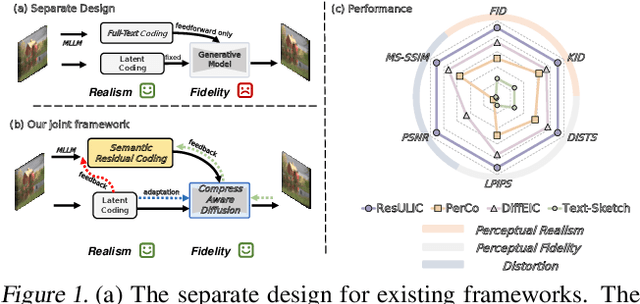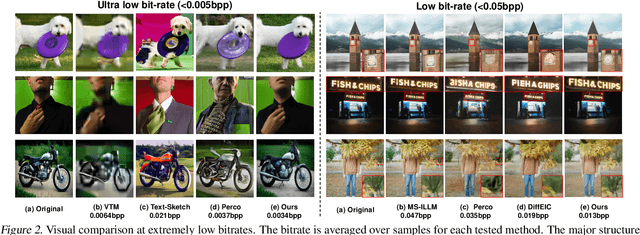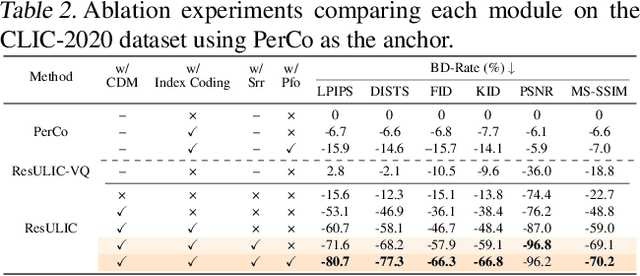Tong Chen
Relational Database Distillation: From Structured Tables to Condensed Graph Data
Oct 08, 2025Abstract:Relational databases (RDBs) underpin the majority of global data management systems, where information is structured into multiple interdependent tables. To effectively use the knowledge within RDBs for predictive tasks, recent advances leverage graph representation learning to capture complex inter-table relations as multi-hop dependencies. Despite achieving state-of-the-art performance, these methods remain hindered by the prohibitive storage overhead and excessive training time, due to the massive scale of the database and the computational burden of intensive message passing across interconnected tables. To alleviate these concerns, we propose and study the problem of Relational Database Distillation (RDD). Specifically, we aim to distill large-scale RDBs into compact heterogeneous graphs while retaining the predictive power (i.e., utility) required for training graph-based models. Multi-modal column information is preserved through node features, and primary-foreign key relations are encoded via heterogeneous edges, thereby maintaining both data fidelity and relational structure. To ensure adaptability across diverse downstream tasks without engaging the traditional, inefficient bi-level distillation framework, we further design a kernel ridge regression-guided objective with pseudo-labels, which produces quality features for the distilled graph. Extensive experiments on multiple real-world RDBs demonstrate that our solution substantially reduces the data size while maintaining competitive performance on classification and regression tasks, creating an effective pathway for scalable learning with RDBs.
TableDART: Dynamic Adaptive Multi-Modal Routing for Table Understanding
Sep 18, 2025Abstract:Modeling semantic and structural information from tabular data remains a core challenge for effective table understanding. Existing Table-as-Text approaches flatten tables for large language models (LLMs), but lose crucial structural cues, while Table-as-Image methods preserve structure yet struggle with fine-grained semantics. Recent Table-as-Multimodality strategies attempt to combine textual and visual views, but they (1) statically process both modalities for every query-table pair within a large multimodal LLMs (MLLMs), inevitably introducing redundancy and even conflicts, and (2) depend on costly fine-tuning of MLLMs. In light of this, we propose TableDART, a training-efficient framework that integrates multimodal views by reusing pretrained single-modality models. TableDART introduces a lightweight 2.59M-parameter MLP gating network that dynamically selects the optimal path (either Text-only, Image-only, or Fusion) for each table-query pair, effectively reducing redundancy and conflicts from both modalities. In addition, we propose a novel agent to mediate cross-modal knowledge integration by analyzing outputs from text- and image-based models, either selecting the best result or synthesizing a new answer through reasoning. This design avoids the prohibitive costs of full MLLM fine-tuning. Extensive experiments on seven benchmarks show that TableDART establishes new state-of-the-art performance among open-source models, surpassing the strongest baseline by an average of 4.02%. The code is available at: https://anonymous.4open.science/r/TableDART-C52B
Beyond Sequential Reranking: Reranker-Guided Search Improves Reasoning Intensive Retrieval
Sep 08, 2025Abstract:The widely used retrieve-and-rerank pipeline faces two critical limitations: they are constrained by the initial retrieval quality of the top-k documents, and the growing computational demands of LLM-based rerankers restrict the number of documents that can be effectively processed. We introduce Reranker-Guided-Search (RGS), a novel approach that bypasses these limitations by directly retrieving documents according to reranker preferences rather than following the traditional sequential reranking method. Our method uses a greedy search on proximity graphs generated by approximate nearest neighbor algorithms, strategically prioritizing promising documents for reranking based on document similarity. Experimental results demonstrate substantial performance improvements across multiple benchmarks: 3.5 points on BRIGHT, 2.9 on FollowIR, and 5.1 on M-BEIR, all within a constrained reranker budget of 100 documents. Our analysis suggests that, given a fixed pair of embedding and reranker models, strategically selecting documents to rerank can significantly improve retrieval accuracy under limited reranker budget.
The Ramon Llull's Thinking Machine for Automated Ideation
Aug 28, 2025Abstract:This paper revisits Ramon Llull's Ars combinatoria - a medieval framework for generating knowledge through symbolic recombination - as a conceptual foundation for building a modern Llull's thinking machine for research ideation. Our approach defines three compositional axes: Theme (e.g., efficiency, adaptivity), Domain (e.g., question answering, machine translation), and Method (e.g., adversarial training, linear attention). These elements represent high-level abstractions common in scientific work - motivations, problem settings, and technical approaches - and serve as building blocks for LLM-driven exploration. We mine elements from human experts or conference papers and show that prompting LLMs with curated combinations produces research ideas that are diverse, relevant, and grounded in current literature. This modern thinking machine offers a lightweight, interpretable tool for augmenting scientific creativity and suggests a path toward collaborative ideation between humans and AI.
Watermarking Large Language Model-based Time Series Forecasting
Jul 28, 2025Abstract:Large Language Model-based Time Series Forecasting (LLMTS) has shown remarkable promise in handling complex and diverse temporal data, representing a significant step toward foundation models for time series analysis. However, this emerging paradigm introduces two critical challenges. First, the substantial commercial potential and resource-intensive development raise urgent concerns about intellectual property (IP) protection. Second, their powerful time series forecasting capabilities may be misused to produce misleading or fabricated deepfake time series data. To address these concerns, we explore watermarking the outputs of LLMTS models, that is, embedding imperceptible signals into the generated time series data that remain detectable by specialized algorithms. We propose a novel post-hoc watermarking framework, Waltz, which is broadly compatible with existing LLMTS models. Waltz is inspired by the empirical observation that time series patch embeddings are rarely aligned with a specific set of LLM tokens, which we term ``cold tokens''. Leveraging this insight, Waltz embeds watermarks by rewiring the similarity statistics between patch embeddings and cold token embeddings, and detects watermarks using similarity z-scores. To minimize potential side effects, we introduce a similarity-based embedding position identification strategy and employ projected gradient descent to constrain the watermark noise within a defined boundary. Extensive experiments using two popular LLMTS models across seven benchmark datasets demonstrate that Waltz achieves high watermark detection accuracy with minimal impact on the quality of the generated time series.
Are Synthetic Videos Useful? A Benchmark for Retrieval-Centric Evaluation of Synthetic Videos
Jul 03, 2025Abstract:Text-to-video (T2V) synthesis has advanced rapidly, yet current evaluation metrics primarily capture visual quality and temporal consistency, offering limited insight into how synthetic videos perform in downstream tasks such as text-to-video retrieval (TVR). In this work, we introduce SynTVA, a new dataset and benchmark designed to evaluate the utility of synthetic videos for building retrieval models. Based on 800 diverse user queries derived from MSRVTT training split, we generate synthetic videos using state-of-the-art T2V models and annotate each video-text pair along four key semantic alignment dimensions: Object \& Scene, Action, Attribute, and Prompt Fidelity. Our evaluation framework correlates general video quality assessment (VQA) metrics with these alignment scores, and examines their predictive power for downstream TVR performance. To explore pathways of scaling up, we further develop an Auto-Evaluator to estimate alignment quality from existing metrics. Beyond benchmarking, our results show that SynTVA is a valuable asset for dataset augmentation, enabling the selection of high-utility synthetic samples that measurably improve TVR outcomes. Project page and dataset can be found at https://jasoncodemaker.github.io/SynTVA/.
Lightweight Embeddings with Graph Rewiring for Collaborative Filtering
May 25, 2025Abstract:As recommendation services scale rapidly and their deployment now commonly involves resource-constrained edge devices, GNN-based recommender systems face significant challenges, including high embedding storage costs and runtime latency from graph propagations. Our previous work, LEGCF, effectively reduced embedding storage costs but struggled to maintain recommendation performance under stricter storage limits. Additionally, LEGCF did not address the extensive runtime computation costs associated with graph propagation, which involves heavy multiplication and accumulation operations (MACs). These challenges consequently hinder effective training and inference on resource-constrained edge devices. To address these limitations, we propose Lightweight Embeddings with Rewired Graph for Graph Collaborative Filtering (LERG), an improved extension of LEGCF. LERG retains LEGCFs compositional codebook structure but introduces quantization techniques to reduce the storage cost, enabling the inclusion of more meta-embeddings within the same storage. To optimize graph propagation, we pretrain the quantized compositional embedding table using the full interaction graph on resource-rich servers, after which a fine-tuning stage is engaged to identify and prune low-contribution entities via a gradient-free binary integer programming approach, constructing a rewired graph that excludes these entities (i.e., user/item nodes) from propagating signals. The quantized compositional embedding table with selective embedding participation and sparse rewired graph are transferred to edge devices which significantly reduce computation memory and inference time. Experiments on three public benchmark datasets, including an industry-scale dataset, demonstrate that LERG achieves superior recommendation performance while dramatically reducing storage and computation costs for graph-based recommendation services.
Multi-Objective-Guided Discrete Flow Matching for Controllable Biological Sequence Design
May 14, 2025Abstract:Designing biological sequences that satisfy multiple, often conflicting, functional and biophysical criteria remains a central challenge in biomolecule engineering. While discrete flow matching models have recently shown promise for efficient sampling in high-dimensional sequence spaces, existing approaches address only single objectives or require continuous embeddings that can distort discrete distributions. We present Multi-Objective-Guided Discrete Flow Matching (MOG-DFM), a general framework to steer any pretrained discrete flow matching generator toward Pareto-efficient trade-offs across multiple scalar objectives. At each sampling step, MOG-DFM computes a hybrid rank-directional score for candidate transitions and applies an adaptive hypercone filter to enforce consistent multi-objective progression. We also trained two unconditional discrete flow matching models, PepDFM for diverse peptide generation and EnhancerDFM for functional enhancer DNA generation, as base generation models for MOG-DFM. We demonstrate MOG-DFM's effectiveness in generating peptide binders optimized across five properties (hemolysis, non-fouling, solubility, half-life, and binding affinity), and in designing DNA sequences with specific enhancer classes and DNA shapes. In total, MOG-DFM proves to be a powerful tool for multi-property-guided biomolecule sequence design.
Ultra Lowrate Image Compression with Semantic Residual Coding and Compression-aware Diffusion
May 13, 2025



Abstract:Existing multimodal large model-based image compression frameworks often rely on a fragmented integration of semantic retrieval, latent compression, and generative models, resulting in suboptimal performance in both reconstruction fidelity and coding efficiency. To address these challenges, we propose a residual-guided ultra lowrate image compression named ResULIC, which incorporates residual signals into both semantic retrieval and the diffusion-based generation process. Specifically, we introduce Semantic Residual Coding (SRC) to capture the semantic disparity between the original image and its compressed latent representation. A perceptual fidelity optimizer is further applied for superior reconstruction quality. Additionally, we present the Compression-aware Diffusion Model (CDM), which establishes an optimal alignment between bitrates and diffusion time steps, improving compression-reconstruction synergy. Extensive experiments demonstrate the effectiveness of ResULIC, achieving superior objective and subjective performance compared to state-of-the-art diffusion-based methods with - 80.7%, -66.3% BD-rate saving in terms of LPIPS and FID. Project page is available at https: //njuvision.github.io/ResULIC/.
Enhancing Treatment Effect Estimation via Active Learning: A Counterfactual Covering Perspective
May 08, 2025Abstract:Although numerous complex algorithms for treatment effect estimation have been developed in recent years, their effectiveness remains limited when handling insufficiently labeled training sets due to the high cost of labeling the effect after treatment, e.g., expensive tumor imaging or biopsy procedures needed to evaluate treatment effects. Therefore, it becomes essential to actively incorporate more high-quality labeled data, all while adhering to a constrained labeling budget. To enable data-efficient treatment effect estimation, we formalize the problem through rigorous theoretical analysis within the active learning context, where the derived key measures -- \textit{factual} and \textit{counterfactual covering radius} determine the risk upper bound. To reduce the bound, we propose a greedy radius reduction algorithm, which excels under an idealized, balanced data distribution. To generalize to more realistic data distributions, we further propose FCCM, which transforms the optimization objective into the \textit{Factual} and \textit{Counterfactual Coverage Maximization} to ensure effective radius reduction during data acquisition. Furthermore, benchmarking FCCM against other baselines demonstrates its superiority across both fully synthetic and semi-synthetic datasets.
 Add to Chrome
Add to Chrome Add to Firefox
Add to Firefox Add to Edge
Add to Edge